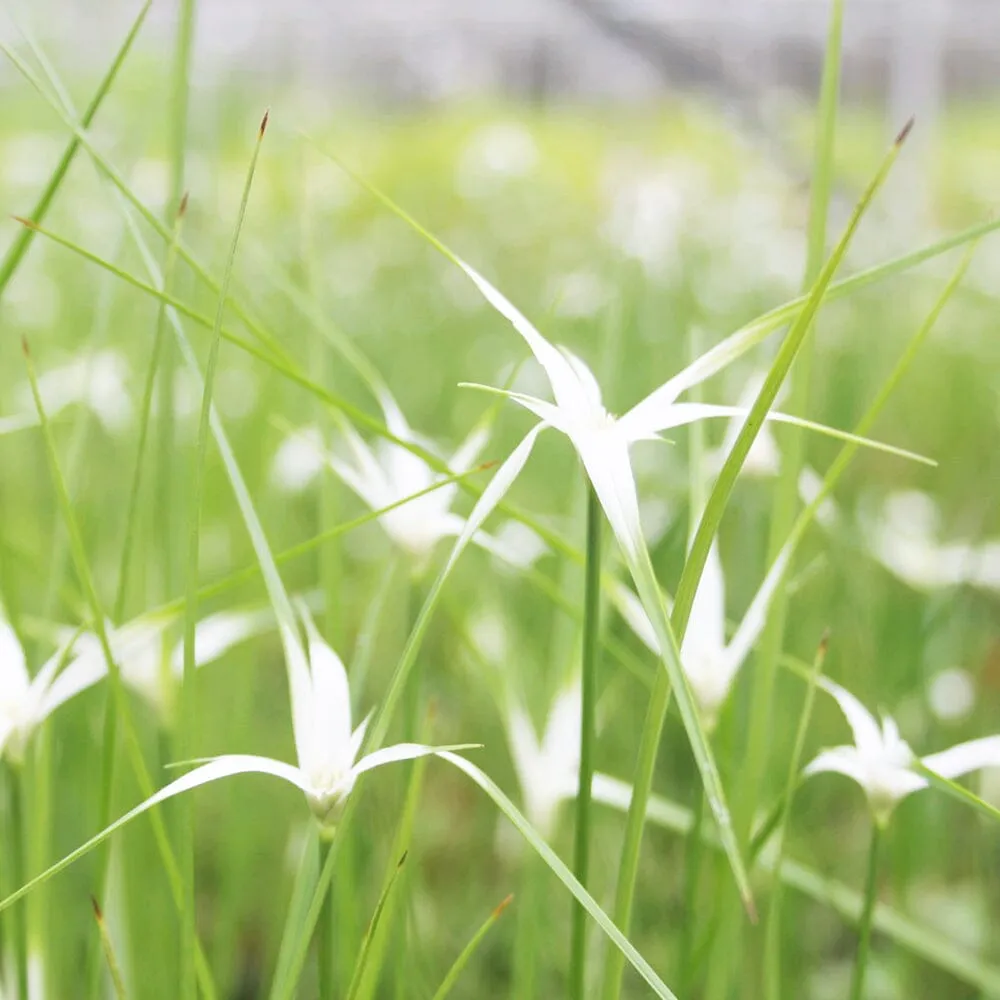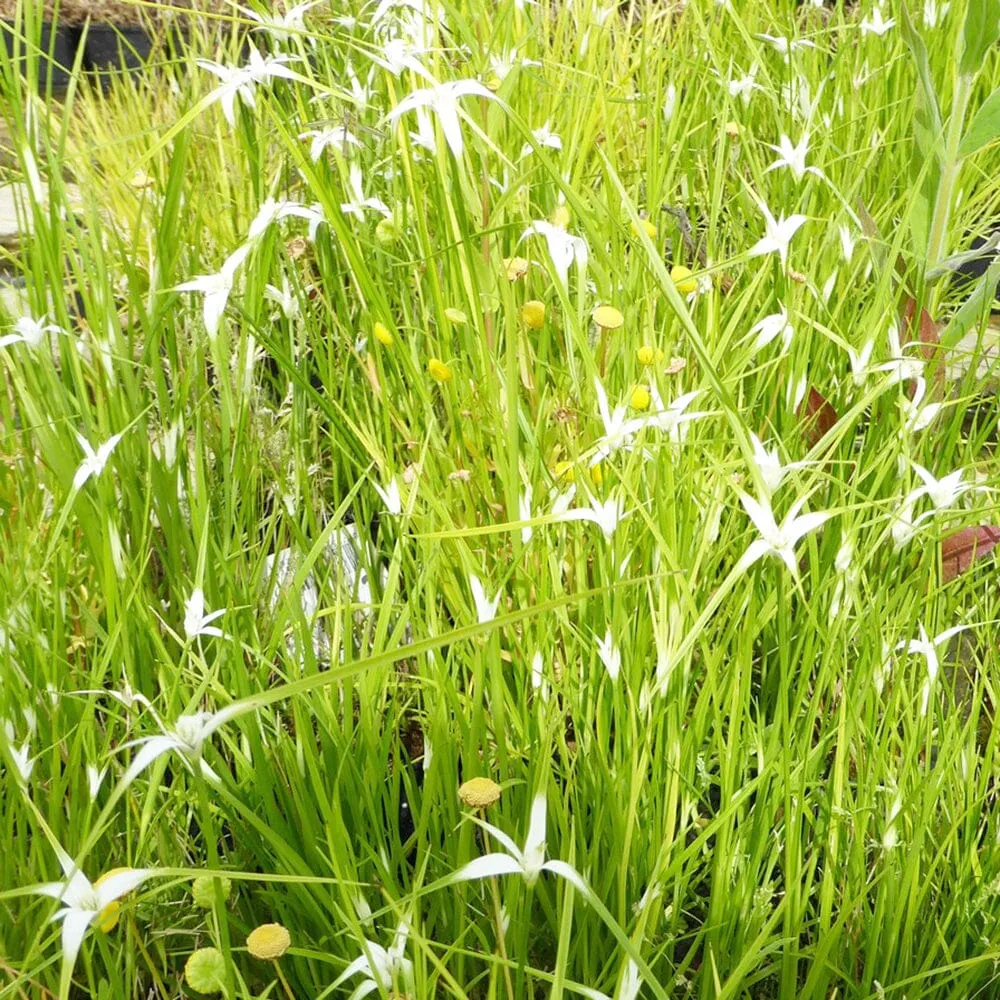Dichromena colorata, commonly known as Star Grass or Umbrella Grass, is a perennial grass-like plant that belongs to the Cyperaceae family. It is native to wetland areas in North America and is known for its attractive foliage and delicate flowers. Here's a detailed description and care guide for Dichromena colorata:
Description:
Dichromena colorata forms clumps of slender, upright stems that can reach heights of 1-3 feet (30-90 cm). The stems are topped with dense clusters of narrow, linear leaves that radiate outwards, resembling an umbrella or star shape. The leaves are typically bright green but can develop a reddish hue in certain growing conditions. In late summer to early fall, Dichromena colorata produces small, delicate white or pale pink flowers on tall stalks. The flowers are followed by small brown seed capsules. The plant's foliage and unique growth habit make it an attractive addition to wetland gardens, pond margins, or rain gardens.
Care Guide:
Lighting: Dichromena colorata thrives in full sun to partial shade. It prefers a location with at least 4-6 hours of direct sunlight per day. However, it can tolerate some shade, especially during the hottest part of the day. In hot climates, some afternoon shade can help protect it from excessive heat.
Water: Dichromena colorata is a water-loving plant and thrives in consistently moist to wet soil conditions. It naturally occurs in wetlands, marshes, and boggy areas. Ensure the soil remains consistently moist but avoid waterlogging. Water deeply when the top inch of soil feels dry to the touch.
Soil: Dichromena colorata prefers fertile, loamy soil that retains moisture well. It can tolerate a range of soil types, including clay, as long as it has good drainage to prevent waterlogging. If growing in a container, use a well-draining potting mix specifically designed for wetland plants.
Temperature: Dichromena colorata is adaptable to a range of temperatures. It is hardy in USDA hardiness zones 7-11. It can tolerate both cold and warm climates. However, it may require protection in colder regions during freezing temperatures. Mulching around the base of the plant can help insulate the roots.
Fertilizer: Dichromena colorata generally does not require heavy fertilization. However, incorporating a balanced, slow-release fertilizer or organic compost into the soil during the growing season can provide a nutrient boost. Follow the manufacturer's instructions or use compost at a rate of 1-2 inches (2.5-5 cm) applied as a topdressing around the plant.
Maintenance: Regular maintenance helps keep Dichromena colorata healthy and attractive. Remove any dead or yellowing foliage to maintain a neat appearance. It is best to trim back the plant in early spring before new growth emerges.
Propagation: Dichromena colorata can be propagated through division or by collecting and sowing its seeds. Division is best done in early spring. Carefully separate the clumps, ensuring each division has healthy roots and stems, and replant them in suitable soil or containers. Seeds can be collected from mature seed capsules and sown in containers or directly in the soil.
Pests and Diseases: Dichromena colorata is generally resistant to pests and diseases. However, it may occasionally attract aphids or be susceptible to root rot if overwatered or grown in overly wet conditions. Monitor the plant for any signs of pests or diseases and take appropriate measures if necessary.
By following these care guidelines, you can enjoy the graceful and delicate appearance of Dichromena colorata in your garden, wetland areas, or water features. Adjust the care routine based on your specific growing conditions and monitor the plant for any signs of stress, pests, or diseases. With proper care, Dichromena colorata can provide a unique and vibrant touch to your landscape, adding beauty and interest to wetland environments.

 Cart(
Cart(











